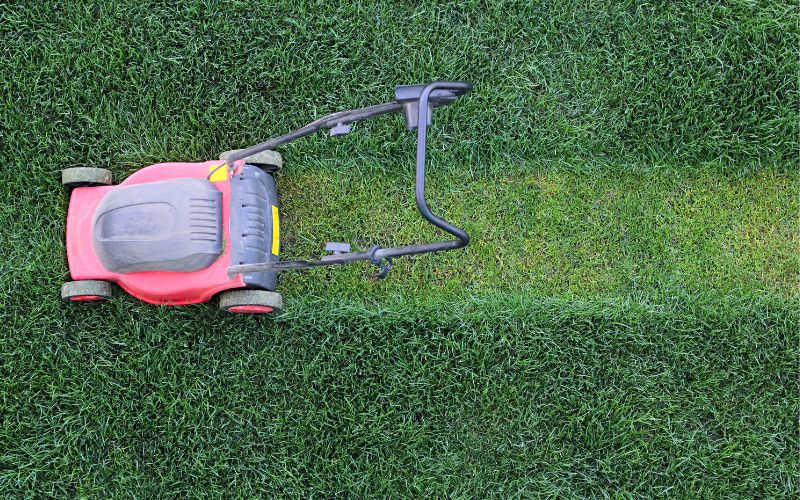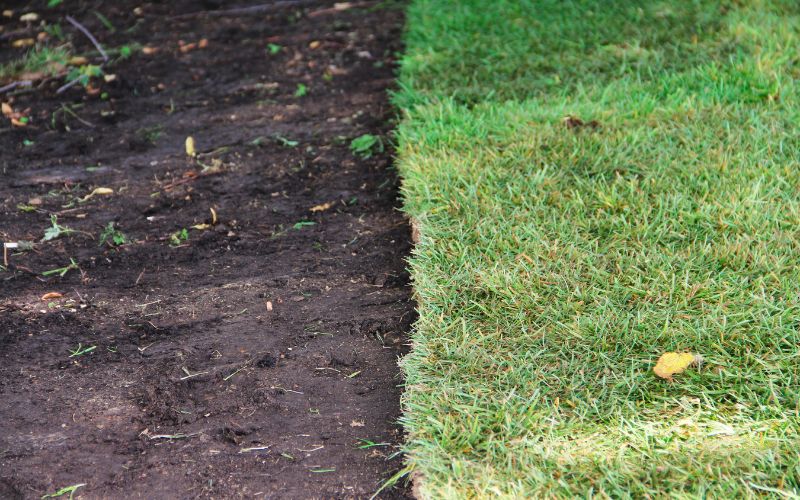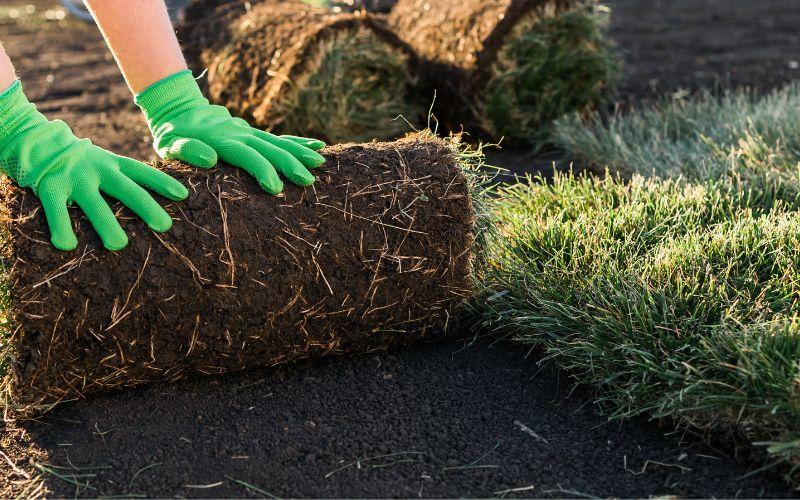
Hello, fellow Canadian garden enthusiasts! Today, we’re going to delve into a question that’s been sprouting up in gardening discussions across our beautiful country: “Can you use a sod cutter in the rain?” As we all know, our Canadian weather can be as unpredictable as a squirrel on a sugar rush, and it’s crucial to understand how it can impact our gardening tools and tasks.
Understanding the Sod Cutter
Before we dive into the heart of the matter, let’s first understand what a sod cutter is. This valuable piece of equipment is used to remove the top layer of grass from your lawn. This process makes it easier to lay new sod, plant a garden, or create a pathway. But when the skies decide to share their bounty, and the rain begins to fall, can you still use your sod cutter effectively?
The Impact of Wet Conditions on Sod Cutting
After extensive research from various Canadian sources, the consensus is generally a resounding no. Cutting wet grass is not only unsafe, but it also results in a less than desirable cut. The wet grass tends to stick to the blades of the sod cutter, causing it to clog and become less efficient. This not only slows down your progress but can also potentially damage the machine.
Furthermore, mowing wet grass can lead to clumping, which is not ideal for a well-manicured lawn. It’s best to mow when the lawn is cool and dry, avoiding the hottest part of the day when the grass is most vulnerable. This is a tip that applies not just to sod cutters, but to all lawn mowing activities.

The Aftermath of Sod Cutting in Rain
Another point to consider is the condition of the lawn post-cutting. Cutting sod in the rain can result in an uneven lawn. The sod may not lay flat when it’s wet, leading to a bumpy and unattractive surface. It’s best to wait for a dry day to ensure that your new lawn is as smooth and even as possible.
Safety Concerns
Safety is another crucial factor to consider. Using any electric power tools in the rain, including sod cutters, can be a safety hazard. Water and electricity are not a good mix, and it’s essential to prioritize your safety above all else.
The Other Side of the Coin
However, it’s worth noting that there are mixed opinions on this topic. Some gardeners have reported using a sod cutter in light rain with no issues. While this may be the case for some, it’s still best to err on the side of caution.
Tips for Easier Sod Cutting
To make the sod cutting process easier, it’s recommended to water the lawn two to three days before to make the soil and sod softer to cut into. The soil should be moist but not soggy. This tip is particularly useful when planning to remove a large area of sod.
In addition to this, using a sharp spade, shovel, or edger can make the process of cutting sod more manageable. Cutting the vegetation into slices and removing it by hand can also be an effective method, especially for smaller areas.
Furthermore, it’s important to keep the sod seams damp all the time for a while after cutting. This helps to prevent the edges from drying out and ensures that the sod remains healthy and vibrant.
Lastly, consider using a sod cutter or sharp knife to cut the other rolls in half to stagger the seams in the middle areas. This can help to create a more natural and seamless look in your lawn.

Best Time for Sod Cutting
The best time to break new ground and prepare the soil for spring planting is in the fall. If the soil is too wet, consider renting a sod cutter instead of spading. This will ensure that the grass is cut below its roots, making it easy to remove.
According to Canadian sources, sod can be installed almost anytime during the growing season when the ground isn’t frozen. This typically ranges from mid-April through the end of November. However, spring and fall are considered the best times of year to install new sod due to the cool, but not freezing cold temperatures of the atmosphere and ground.
Springtime is a great time to have sod installations done because of this season being the start of plant growth after a cold and heavy winter. On the other hand, early to mid-fall can also be an ideal time to lay sod. During fall, temperatures may be cooler, but grass growth continues, providing a good environment for the sod to establish.
Additional Considerations
It’s also important to consider the impact of the season on sod cutting. If you lay sod in spring, the roots may stay shallow and break off when you mow. In autumn, the soil will be cold but not as wet. The sod will still grow roots, providing a more stable base for your new lawn.
Conclusion
In conclusion, while our Canadian weather may throw us some curveballs, it’s essential to know when to step back and wait for better conditions. Using a sod cutter in the rain may seem like a good way to make progress, but it can lead to more harm than good. So, next time the rain starts to fall, take a break, enjoy a hot cup of tea, and rest assured that your sod cutter (and your lawn) will thank you for it!
Remember, patience is a virtue, especially in gardening. Waiting for the right conditions to use your sod cutter will result in a healthier, more beautiful lawn. So, let’s embrace our unpredictable Canadian weather, and let it guide our gardening activities.
So, here’s to another great year of gardening in Canada! No matter what the weather throws at us, we’ll be ready. With the right tools and the right knowledge, there’s no limit to what we can achieve in our gardens. Happy gardening, Canada!
Colin Macmillan is a seasoned entrepreneur and the CEO of Riverwood Landscape, a leading landscaping company based in Canada. He has been at the helm of the company since leaving high school, demonstrating his strong leadership skills and business acumen.
Colin’s expertise lies in various aspects of landscaping, including lawn care, interlocking, sod installation, and commercial maintenance. His hands-on approach and dedication to the craft have been instrumental in building Riverwood Landscape into a reputable brand.
One of his most notable achievements is the creation of a successful landscape franchise that services multiple locations. This accomplishment underscores his strategic thinking and ability to scale operations effectively.
Colin has also had the privilege of working with Guelph Hospital for landscaping and maintenance, a testament to the trust and reliability that his company has earned over the years.
His professional mission is to offer the best services and experiences for customers, a goal that he tirelessly pursues. Colin’s commitment to excellence and customer satisfaction continues to drive the growth and success of Riverwood Landscape.








